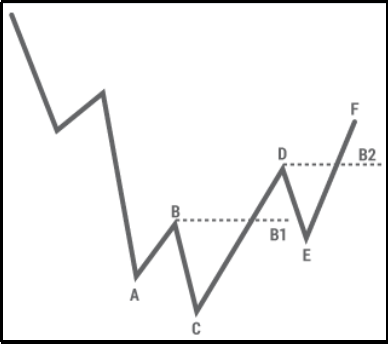Dow Theory: What are the Six Tenets of Technical Analysis?
Wed, Feb 22, 2023 10:08 AM on Stock Market, Exclusive, Recommended,

Dow theory, named after Charles Dow(1851-1902)AD, a renowned financial journalist/expert, is still one of the cornerstones of the study of technical analysis. Having been a co-founder of Wall Street journal, he published his ideas in a series of editorials in the newspaper. He, along with his partner Edward Jones founded Dow and Jones company in 1882 AD. He also published the first stock market average in 1884 AD composed of the closing prices of eleven stocks: 9 railroad companies and 2 manufacturing companies. He believed that these stocks provided a good indication of the health of the company. Later in 1897 AD, he determined that 2 indices would better represent health. So, he formed 12 stock industrial index and 20 stock rail index. Today, the stocks in Dow Jones has grown to 30 different top companies.
In 1903, a year after Dow’s death, S.A. Nelson, compiled his essays, editorials and articles published in Wall Street Journal into a book entitled: “The ABC of Stock Speculation”. In this book, Nelson coined the term, “Dow’s Theory”.
Here are six of the basic tenets of Dow Theory:
- Market action discounts everything
The above statement is the foundation of technical analysis. Price can be affected by almost everything: fundamentals, politics, economics, psychology and more. Information from each of these segments are able to affect the price action(price and volume) in the market. And, all the information is already discounted(adjusted) in the market and it is reflected in the price before the information is revealed. Market reflects every possible knowable factor through the overall demand and supply of the stock. However, as the market can’t predict natural events like earthquakes, the effects of these events are instantly seen in the price action.
- Prices move in Trends
One of the main aims of technical analysis is identifying the trends in order to trade in the direction of those trends because “A trend is a friend.” A trend in motion is likely to continue in the same trend than to reverse. This statement can be used as an analogy for Newton’s first law of motion: a motion is likely to continue unless an external force causes it to change direction.
Dow has identified 3 main types of trends: uptrend, downtrend and side trend. He defined uptrend as a situation in which each successive rally closes higher than the previous rally high, and each successive rally low also closes higher than the previous rally low. The opposite situation, with successively lower peaks and troughs defines a down trend. A period of equilibrium in the price level where the demand and supply are in a relative state of balance is called sideway trend.
Dow believed that a trend has 3 parts: primary, secondary and minor trend. He believed primary trends lasted more than a year, possibly several years and intermediate trends lasted around 3 weeks to three months. He considered that an intermediate correction retraced around one-third and two-third of the previous trends or was most likely to retrace a half of the previous move. Likewise, he presumed that minor trends usually lasted less than 3 weeks.
- Major Trends have three phases
Dow mentions that a primary trend usually takes place in three distinct phases: accumulation, public participation and distribution phase. An accumulation phase is a period of time where the most astute investors tend to accumulate or buy stocks. They tend to continuously buy stocks at the down market as they realize that the market has assimilated the bad news.
The public participation phase is the time when most technical trend followers begin to participate and the prices and volume tend to advance rapidly. In this period of time, you probably hear extra bullish stories in newspapers and all over social media.
During the last phase, the same astute investors tend to distribute their accumulated stocks before anyone starts selling.
- The averages must confirm each other
Dow had made two averages: Dow and Jones Industrial Average and Dow and Jones Railway Average. So, here he mentioned that both of the averages must give the same signal (bull or bear) in order to confirm the trend. He felt that both the averages must exceed the last peak in order to confirm a bull market. If two of the averages diverged from one another then, the prior trend was still maintained and a new trend was unlikely to happen.
- Volume must confirm the trend
Dow recognized Volume as a secondary but an important factor in confirming a trend. He stated, Volume should expand or increase in the direction of major trends. It means, in a major uptrend, volumes should rise as the price increases and reduce as the price decreases. However, in a downtrend, volume should increase as the price drops and diminish as they rally. Dow considered that volume and price should confirm each other in order to determine the trend.
- The use of closing prices and the presence of lines
Dow heavily relied on closing prices. He believed that averages had to close higher than a previous peak or lower than a previous trough to have significance. In figure (a), the buy signal takes place at B1 when point B is exceeded, which is called the failure swing. In figure (b), the buy signal takes place at either B1 or B2, also called non-failure swing.

Fig (a), Failure Swing

Fig (b), Non- Failure Swing


